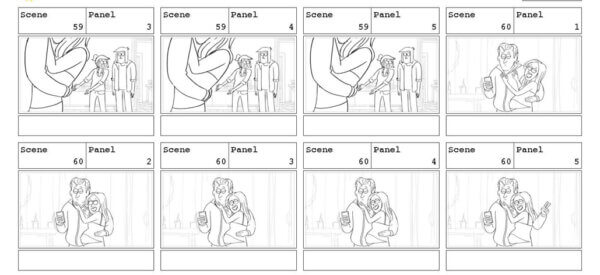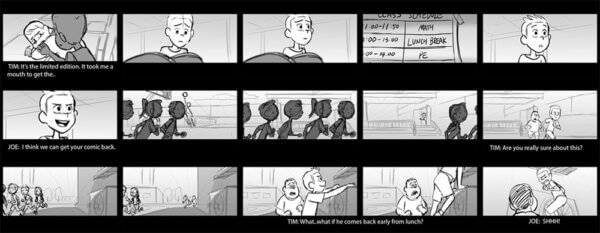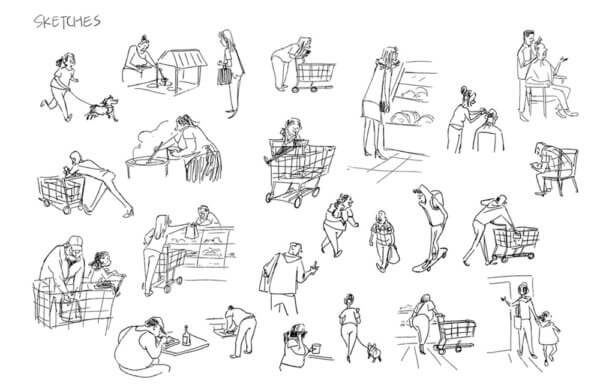9 Tips for your Story Portfolio
Siti Lu is an animation director, storyboard artist and animator from Los Angeles. She landed her first storyboard job at Cartoon Network Studios in sophomore year at CalArts. She has been working as a professional storyboard artist at Cartoon Network and Netflix Animation since then. She storyboarded on shows like Close Enough, Driftwood and We Baby Bears. She has wide-ranging storyboarding experiences for feature and TV series which targeted audiences including both adult and kids/family audiences.
1. Know who your target is
Storyboard portfolios can vary depending on what kind of story job you are applying for. Properly researching your dream studio beforehand can be very helpful. The two main categories are Features and TV. In general, for TV storyboarding portfolios, characters should be more posed out and have a cleaner look. The portfolio piece usually has 6-9 panels on each page. For features the storyboard can be rougher – however, the shot selection should be more cinematic; single panels on each page and examples of animatics are preferred for feature portfolios.
2. Do your thumbnails
Thumbnails are the essential blueprint in the storyboarding process. Usually the first pass of your storyboard is not going be the best solution for the story. Your thumbnail drawings should be super quick and clear enough for you to understand, that way you can test out all the different approaches for the same story within a very short amount of time and then you can pick the best one from there. If you do your thumbnails right, 90% of your job is done at this stage.
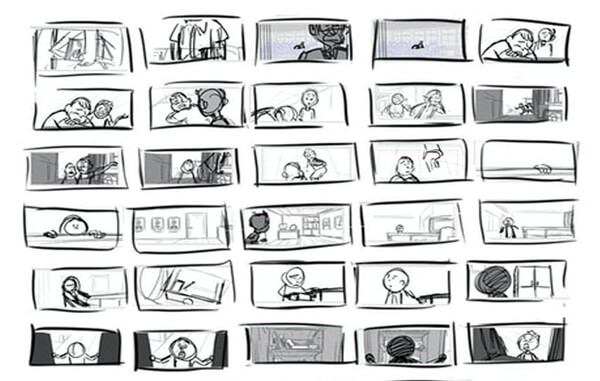
Image courtesy of Siti Lu
3. Clarity is key
As a storyboard artist, your job is to tell a story through images, therefore, clarity is the top priority for your storyboard. Always make sure that your boards are 100% clear to your audience. Another mistake that beginner story artists tend to make is trying to kill two many birds with one stone. Keep your storyboard simple and focus on communicating one thing at a time for every panel so that the audience doesn’t get confused or overwhelmed by what’s happening.

Image courtesy of Siti Lu
4. Clean Drawing =/= Stiff Drawing
Your portfolio should include some clean drawings. This is a great way to show your draughtsmanship, but be careful with them. Oftentimes when I see artists clean up their boards they end up losing the appeal of their rough pass. When you clean your boards, make sure it still conveys the same level of impact as your rougher boards. It’s also worth bearing in mind that clean storyboards for TV are very different than feature storyboards. Learn from your favourite artists at your dream studios and see how approach their cleaner boards for their job.
5. References are your friends
I know some artists who are ashamed of using references and think that they should be experienced enough to draw everything out of their imagination. The truth is, references are an artist’s best friend – for example, even if you know the whole anatomy of a horse, by drawing from memory you run the risk of ending up with a design that looks too generic. By just pulling up a still image or reference video of a horse, you can be inspired by the real-life energy of a horse that will likely translate to a better-looking drawing. Always learn by taking advantage of references, as it will make your drawings more believable and appealing.
6. Diversity is important
We all have our favourite genre or comfort zone for storyboarding. However, including sequences that can represent different genres in your portfolio is a good idea. As a storyboard artist, you can’t predict what kind of sequence the director is going to assign to you, so it’s important to show the studio that you can convey a broad range of styles and emotions, such as comedy, emotional scenes or action.
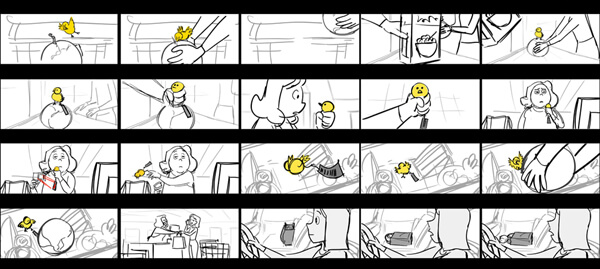
Image courtesy of Siti Lu
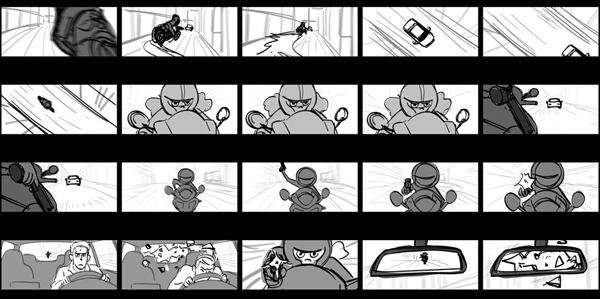
Image courtesy of Siti Lu
7. Life drawing and comics
For a storyboard portfolio, life drawing can be a plus point. You want to show your life drawing ability which is a very important skill for a storyboard artist. This means you can draw a character fast with clear, appealing poses. Another great thing to include are examples from personal comics, as comic storytelling is very similar to storyboarding. With comics, you can show your other storytelling skills outside of storyboards, and studios generally appreciate the inclusion of personal projects so that they can understand you better as a person.
8. Keep it short and solid
Your portfolio should show your best work and be as concise as possible. It’s important to bear in mind that recruiters have thousands of portfolios to review, so you don’t want yours to be too long or too average. Make sure to keep your best work presented at the top of your portfolio. Ideally, 50-150 panels per sequence and 3-4 storyboards in total is a good amount for your portfolio.
9. Work balance
Storyboarding is very hard, so whenever you finish a sequence, celebrate and enjoy some boba ❤️

Image courtesy of Siti Lu
Good luck!


